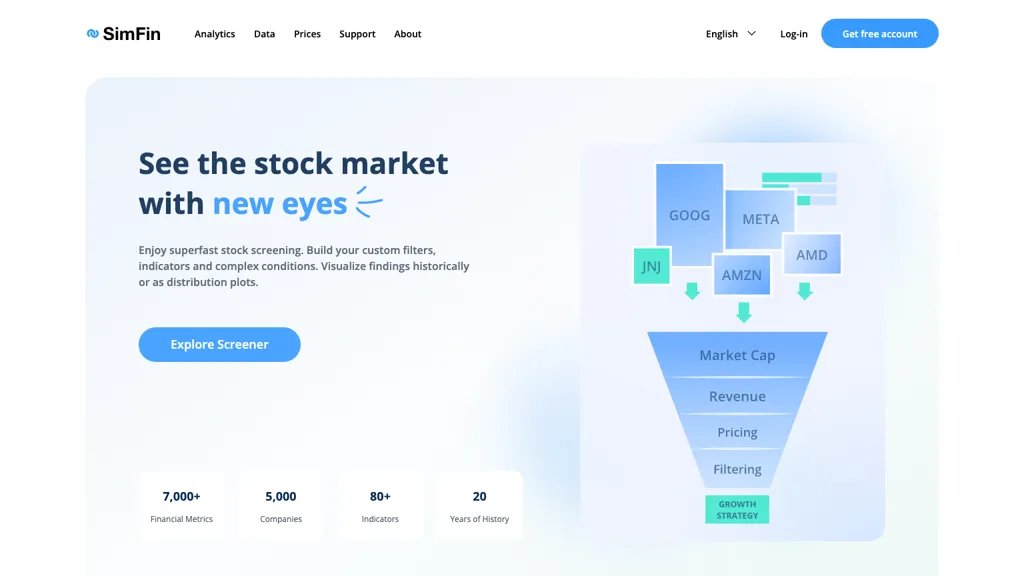20 Best Suggestions On Picking AI Stock Trading Analysis Sites
20 Best Suggestions On Picking AI Stock Trading Analysis Sites
Blog Article
Top 10 Tips When Taking A Look At The Cost And Pricing For Ai Analysis And Stock Prediction Platforms.
Assessing the cost and pricing of AI software for predicting and analyzing stocks is vital to ensure you are getting the most value from your investment while avoiding hidden fees or unexpected costs. Knowing what you pay for and the price structure can be very different. This will allow you to make an informed decision. Here are 10 top tips to help you evaluate the price and value of these platforms.
1. Learn more about the pricing structure
Subscription-based: Find out whether the platform charges an annual or monthly fee and what features are offered on each level.
Pay-per-use: Check whether the service charges according to the amount of usage (e.g. the number of transactions, requests for data or forecasts).
Freemium-model: Examine if it offers an initial free version with limited functionality and charges for premium features.
2. Compare Pricing Tiers
Examining the features that are included in each price range (e.g. basic professional, professional, and enterprise).
Scalability - Ensure that the pricing levels you choose to use are in line with your requirements.
Upgrade flexibility: Discover whether you can easily upgrade or downgrade your system as your requirements evolve.
3. Evaluate Hidden Costs
Data charges: Find out if you need to pay additional to access premium data.
Brokerage Fees: Check the extent to which your platform charges fees for integration or trade execution.
API use: Find out if you will incur additional costs for high frequency API usage or API access.
4. Demos as well as Trials are available for free
Trial period. Look for platforms offering a trial or demo so that you can test their services before committing.
Check the limitations on the free trial. It may not include all of its features.
Options with no commitment: You should be able to cancel your trial without incurring any charges if you find that the platform doesn't meet your needs.
5. Take a look at the latest deals and promotions
Discounts for annual subscriptions: Find out whether your platform offers discounts on subscriptions that are paid annually, compared to plans that are paid on a monthly basis.
Referral programs: Verify if you can get credits or discounts by referring others to the platform.
Ask about bulk or institutional pricing if your company is a large one.
6. Examine the Return on Investment
Cost and value: Compare the price of a platform against its capabilities. Does it help you save time or assist you in making better choices in trading?
Study the platform's success rates or testimonials from users to determine its potential ROI.
Cost alternatives - Compare the platform's price with the cost that could be incurred in the event that you do not use it (e.g. missed opportunity, time spent on manual analysis).
Review Cancellation Policy Revision
Cancellation policy: Make sure that you have the ability to cancel the subscription without penalty or charges.
Refund policy: Make sure to check whether the platform allows refunds for unused parts of your subscription.
Auto-renewal : Check whether your subscription is auto renewed by the platform. If so, find out how you can opt out.
8. Transparency in pricing is crucial.
Clear pricing: Ensure that the platform's pricing is clearly stated and has no hidden costs.
Customer support Contact customer support to clarify any unclear pricing details or any additional charges.
Contract Terms: Read the contract terms to determine whether there are penalties or obligations for the long-term.
9. Compare your competitors
Compare features and prices of different platforms to get most value.
Review by users: Go through reviews from users on the platform, and decide if it's worth the cost.
Market positioning: Find out if the platform is priced as a premium, mid-tier, or budget option and whether it meets your expectations.
10. Examine the Long-Term Costs
Price increases: Determine whether the platform has a track record of raising prices and when this happens.
Feature Additions: Evaluate if there are new features that are available in the current version or if you should consider upgrading.
Scalability cost The platform needs to be priced appropriately when your trading activities or data requirements rise.
Bonus Tips
Free trials of multiple platforms are available for you to try and compare the value and performance of different platforms.
Negotiate the price: If you are frequent users or part of a large institution Ask about special pricing or discounts.
You should look into educational sources. Many platforms provide free educational tools or materials, which can be an excellent addition to the features they already have.
These tips will assist you in evaluating the prices and cost of AI stock-predicting/analyzing trading platforms. You can pick one that is suitable for your budget and provides the features you require. A good-priced trading platform will achieve the ideal balance between features and affordability that will allow you to achieve the best results. Follow the top ai for investing for more examples including trading ai, ai stock trading app, ai stocks, ai stock trading, ai trading tools, ai chart analysis, ai trade, options ai, ai for stock trading, ai stock trading app and more.
Top 10 Tips To Assess The Risk Management Of Ai Stock Predicting/Analyzing Platforms
Risk management is a crucial element of any AI trading platform. It can help protect your investment and minimize the possibility of losses. A platform with strong risk management tools will assist you in navigating market volatility and make well-informed decisions. Below are the top ten tips for assessing the risks management capabilities of these platforms:
1. Review Stop-Loss and take-profit features
Customizable settings: Make sure you have the ability to set the take-profit or stop-loss level for a specific trade.
Make sure the platform is able to allow the use of trailing stops. They will automatically adjust themselves as the market moves in your favor.
Make sure your platform allows you to put stop-loss order that guarantee the closing of your trade at the price you have specified, even in unstable markets.
2. Utilize Position Sizing Tools
Fixed amount. Be sure to have the option to define your positions' sizes in terms of an amount that is fixed in dollars.
Percentage of portfolio: Check whether you are able to set position sizes as a percentage of your overall portfolio to reduce risk proportionally.
Risk-reward Ratio: Ensure that the platform allows for setting risk-reward levels for each individual.
3. Make sure you are using Diversification Assistance
Multi-asset trading : Ensure that the platform permits you to trade across a variety of types of assets, including ETFs, stocks, as well as options. This can help you diversify your portfolio.
Sector allocation: See if the platform provides tools for monitoring and managing the exposure of sectors.
Diversification of geographical risk: Find out if the trading platform supports international markets in order to spread risk across different geographical areas.
4. Examine the Margin and Leverage Controls
Margin requirements. Be aware of the requirements for margin prior to trading.
Limits on leverage: Find out whether the platform allows you to set leverage limits to control risk exposure.
Margin Calls: Make sure that the platform sends out timely notifications of margin calls to stop account liquidation.
5. Assessment and Reporting of Risk
Risk metrics: Ensure that the platform provides important risk indicators to your portfolio (e.g. Value at Risk (VaR), sharpe ratio, and drawdown).
Analysis of scenarios: Make sure that the platform is able to create different scenarios for the market to determine the risk.
Performance reports: Verify if the platform provides comprehensive performance reports, which include the risk-adjusted return.
6. Check for Real-Time Risk Monitoring
Monitoring your portfolio: Make sure that the platform allows real-time monitoring of the risk exposure to your portfolio.
Alerts and notifications. Ensure that the platform sends out alerts in real-time when certain risk-related events occur (e.g. Margin breaches or triggers for stop-loss order).
Risk dashboards: Make sure the platform provides an adjustable risk dashboard that gives you an entire overview of your risk profile.
7. How can you assess Stress Testing & Backtesting
Stress testing: Ensure the platform you use allows you to test your strategies or portfolio under the most extreme market conditions.
Backtesting: Find out if the platform supports backtesting strategies with old data to gauge risk and performance.
Monte Carlo: Verify the platform's use Monte Carlo-based simulations to evaluate the risk and modeling a range or possible outcomes.
8. Risk Management Regulations Compliance Assessment
Regulatory Compliance: Verify the platform's compliance with the relevant Regulations on Risk Management (e.g. MiFID II for Europe, Reg T for the U.S.).
Best execution: Ensure that the platform adheres best execution practices. It will guarantee that transactions are completed according to the most competitive price in order to reduce slippage.
Transparency: Ensure that the platform provides clear and transparent disclosures about the potential risks.
9. Look for parameters controlled by the user.
Custom risk rule: Make sure that your platform allows you define custom risk management guidelines (e.g. the maximum daily loss, or maximum position size).
Automated risk controls You should check whether your system can implement risk management policies upon the parameters you've set.
Manual overrides: Find out whether the platform supports manual overrides to automate risk controls in case of emergency.
10. Review User Feedback and Case Studies
User feedback: Use user reviews to evaluate the platform's ability to manage the risk.
Case studies: Check for case studies or testimonials that showcase the platform's strengths in risk management.
Community forums. Find out if the platform has a vibrant user-based community where traders can exchange strategies for risk management and advice.
Bonus Tips
Trial period: Take advantage of a no-cost demo or trial to test the capabilities of the platform for managing risk in real-world scenarios.
Customer support - Ensure that the platform has robust support for questions and issues related to risk.
Educational resources: Determine whether there are any educational resources that cover best practices in managing risk.
If you follow these guidelines, you can evaluate the capability of AI platforms for stock prediction and analysis to control risk. This will ensure you select a system that protects your capital and minimizes any losses that could occur. Effective risk management tools are essential for navigating volatile markets and achieving long-term trading success. Follow the top the full details on best ai trading platform for website info including invest ai, ai trading tool, ai stock price prediction, ai options, ai for trading stocks, ai stock price prediction, ai software stocks, ai share trading, ai stock price prediction, ai stock predictions and more.